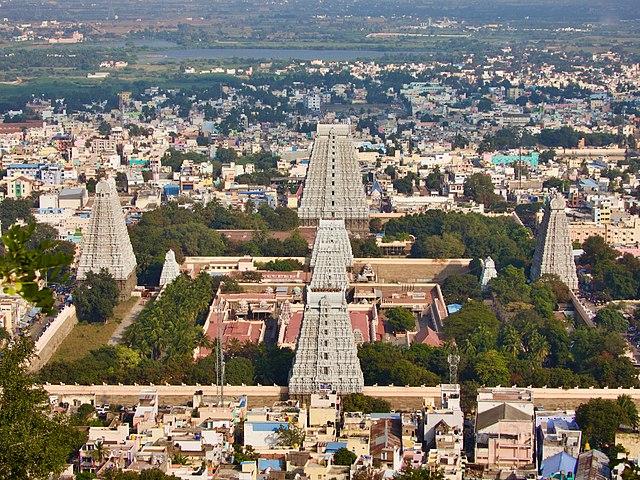The Arunachaleswarar Temple was built during the Chola dynasty in the 9th century, with later contributions from the Vijayanagara, Sangama, Saluva, Tuluva, and Pallava dynasties. Renovations were done by various kings, including Chera, Chola, Pandya, Vijayanagara, and Nayaks, over nearly a thousand years.
Religious Significance:
The temple is linked to the legend where Lord Shiva was asked to judge who was the greatest between Brahma and Vishnu. Shiva transformed into a column of fire, symbolizing his supreme power. Brahma tried to find Shiva’s crown, but failed, and Vishnu accepted defeat after searching for Shiva’s feet. Shiva cursed Brahma for his deception and decreed that he would have no temples on earth. The place where Shiva stood as a column of fire is Thiruvannamalai.
The temple also relates to the story of King’s devotion. Shiva, in the guise of a sannyasin, tested the king’s dharma and devotion. After the king’s wife, Sallammadevi, offered herself, Shiva transformed into a child and later disappeared, assuring the king that he would perform his funeral rites.
The Annamalai hill has transformed over the ages: Agni (fire) in Krithayugam, Emerald in Threthayugam, Gold in Dwaparayugam, and rock in Kaliyugam. At the foot of this hill, Shiva took the form of a Sivalingam, now housed in the Annamalaiyar Temple.
Administration History :
The temple has been managed through various periods by different dynasties. Initially, it was under the Pallava, Chozha, Pandya, and Hoysala kings, each contributing to its construction and renovation. Nattukottai Nagarathars later took responsibility for substantial renovations and improvements. Inscriptions from the Chozha and Vijayanagara periods record various endowments and changes to the temple, including land donations, offerings, and perpetual lamps. The temple has also been administered by local rulers and regional officials, ensuring its upkeep and sanctity. Today, the temple is managed by the Hindu Religious and Charitable Endowments (HR&CE) Department of the Tamil Nadu Government. It continues to be a place of regular worship and cultural significance, with ongoing maintenance and religious activities guided by the HR&CE.
